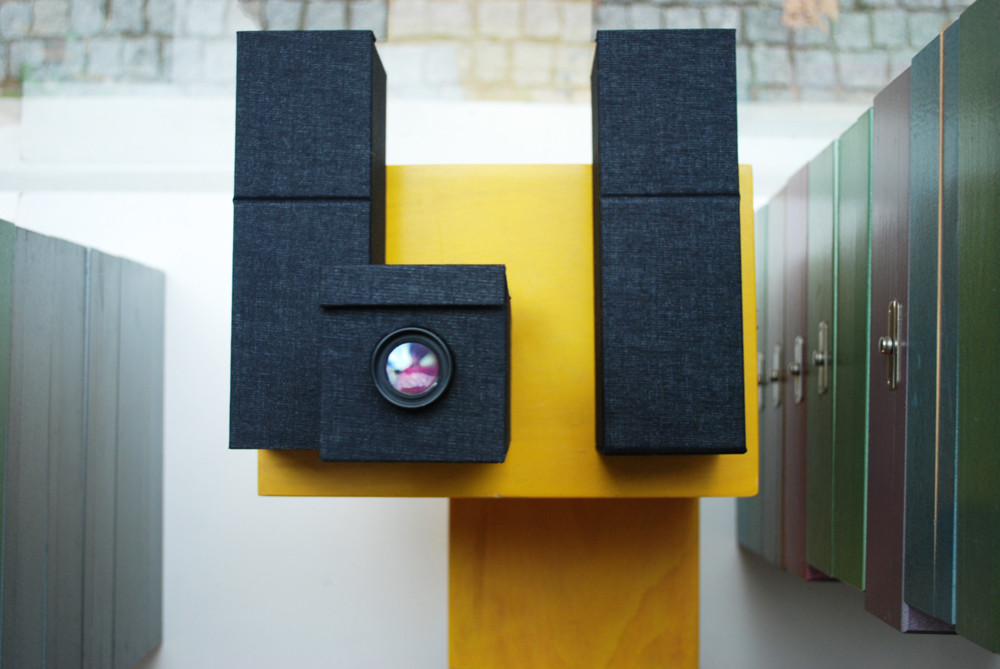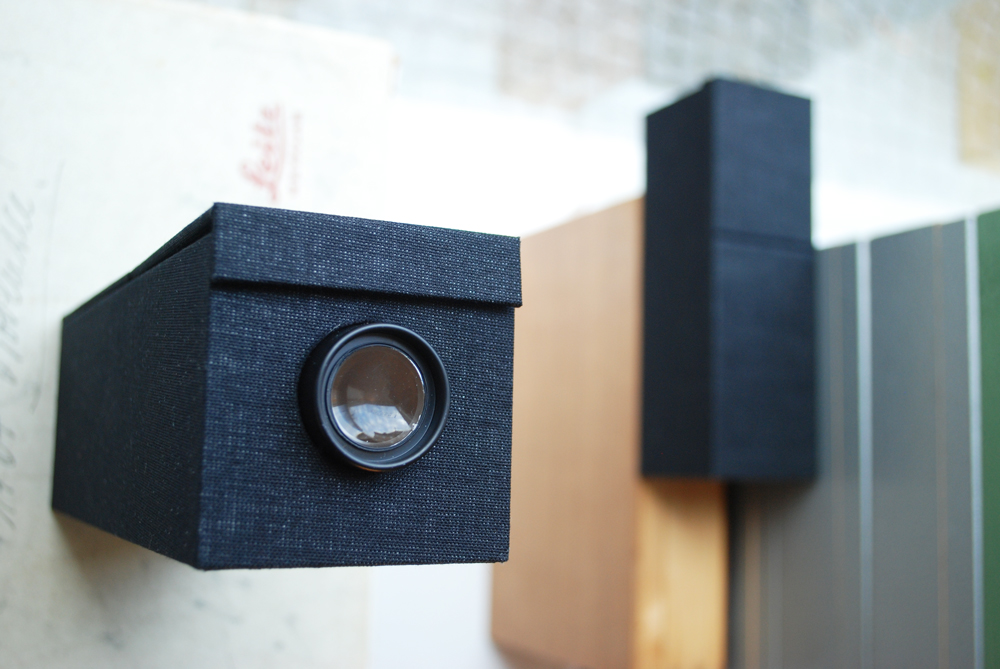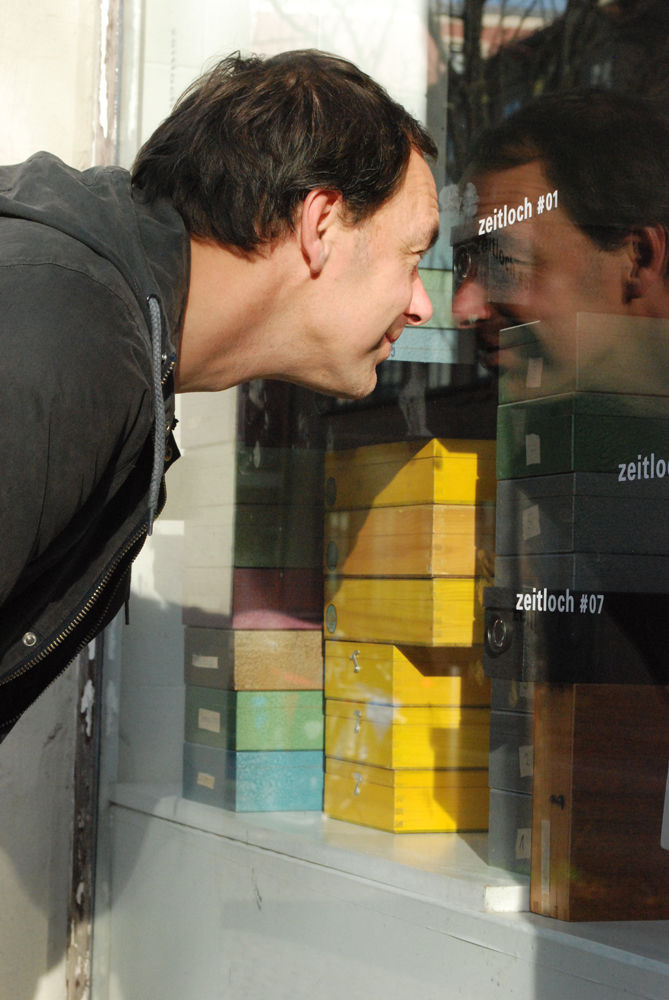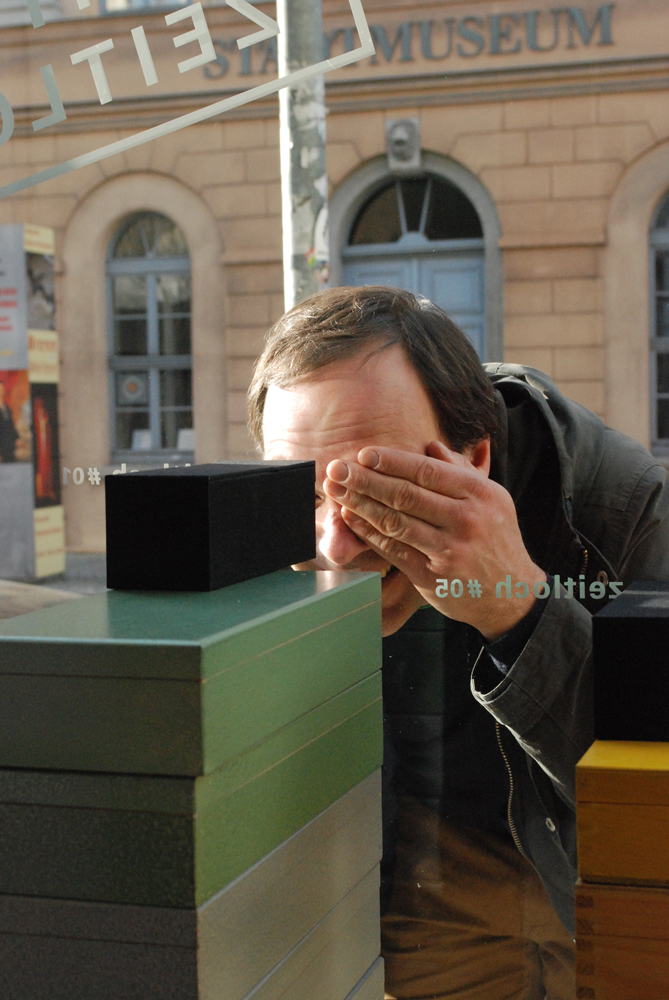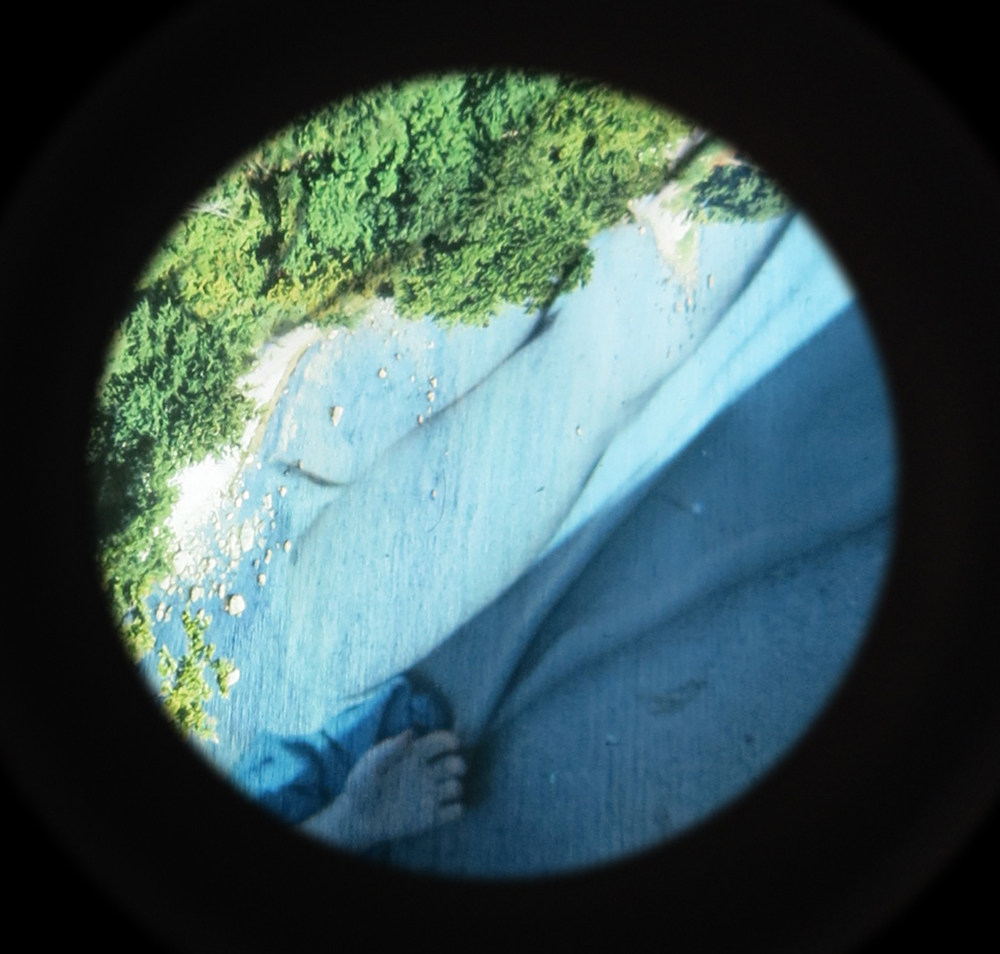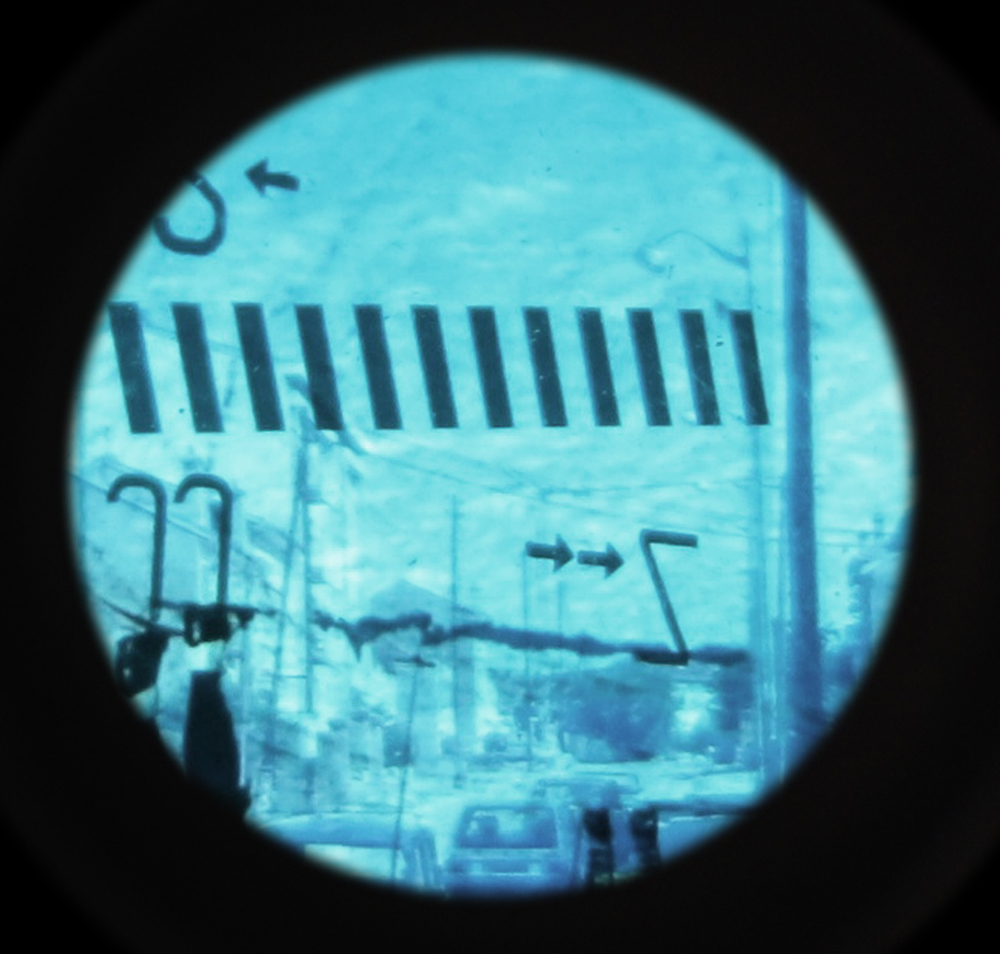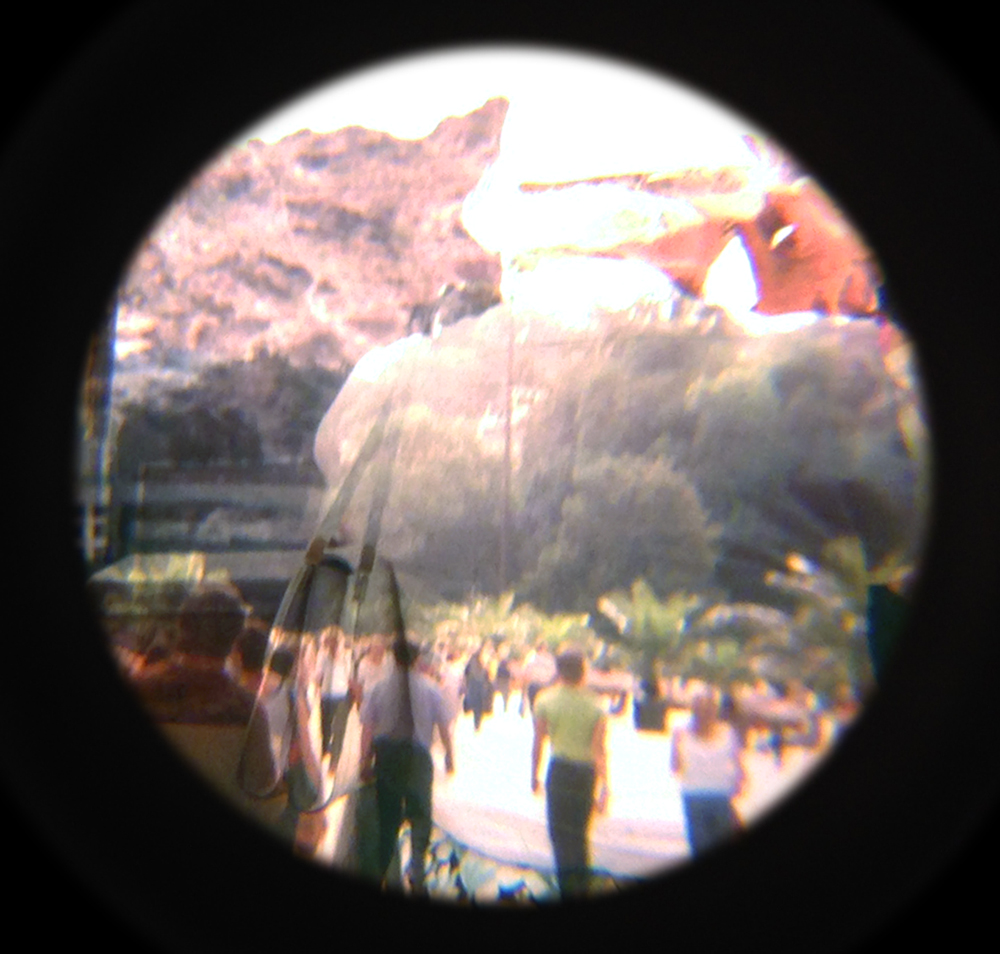« Achtung Zeitloch » (Attention! Time hole)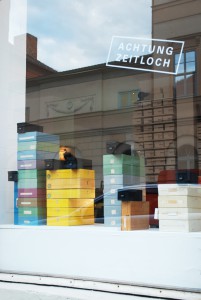
Anke Heelemann
2015
Installation
FOTOTHEK, Karl Liebknecht Straße 10, Weimar
10 zograscopes, each 5,5 cm x 5,5 cm x 22 cm
From October 20th to November 30th people who passed the FOTOTHEK in Weimar (Germany) risked falling into a time hole! They could embark on a journey through the time by means of 10 zograscopes. Anke Heelemann installed them in the display window of her specialist shop for forgotten private photography. The look into the peep-boxes offered passers-by a view into an impossible past. Anke laid several diapositives of her photo-collection in a row, so that the scenes – illuminated by artificial or daylight – seem to be one. Due to the optical effect of the zograscope, intensified by the superimposition of the pictures the observer sees the resulting images in three dimensions. Sometimes there even seem to be movement in the pictures, when the observer slightly shifted his position. This effect is purely analogue; there is no digital impact on it.
Zograscopes sunk a little bit in oblivion in our current digital age. Perhaps one remembers them as children’s toys from his infancy, when he was fascinated by the three dimensional pictures inside. However, they were really popular in the second half of the 18th century as fair attraction or parlour entertainment. This optical device for enhancing the sense of depth perception allowed a society without modern mass media glimpses into an unknown world from unreachable countries, landscapes, flora and fauna.
The impressions that provide Anke’s time holes are in a similar manner journeys into an unknown world. The used photographs are taken by anonymous authors in different contexts and are dating from a time range around 1920 to 1980. So the resulting mixed images are showing perhaps unspoilt landscapes overlapping a city street scene; Aunt Berta sitting in the jungle or Uncle Hugo having tea with his daughter who has the same age as him. During the time of the installation Anke changed the original photos with the result of uncountable new surreal combinations of time, space and humans. It came to an interaction in between things, which had nothing to do with each other before. They are fusing to a new sensual scene.
These analogue collages of time and space have to stay ephemeral. It’s impossible to record the depth perception of the zograscope. We can only give an idea of the images as two-dimensional photographs. For the rest everyone’s imagination has to work on its own.
Anke Heelemann
Born in 1979 Hoyerswerda (Germany) Anke Heelemann lives and works in Weimar (Germany). She studied at the Hochschule für Grafik und Buchkunst (Academy of Fine Arts) in Leipzig (Germany), at the Bauhaus Universität (Bauhaus University) in Weimar and at the College of Fine Arts in Sydney (Australia). She received several grants, inter alia from the Kulturstiftung des Freistaats Thüringen (cultural foundation of the Free State of Thuringia), the Bauhaus Universität Weimar and of the Freistaat Thüringen (Free State of Thuringia).
Since the invention of photography, people produced an unimaginable quantity of private photos. A huge part of it got lost. Another part of it still exists in cellars and attics and finds its way back to attention through household clearances to flea markets and auctions. The paper prints, diapositives and photo albums build an ownerless world of images that have lost its context. Due to this observation Anke started to collect anonymous private photographs and gave them a new home in 2006, when she founded the FOTOTHEK – Fachgeschäft für vergessene Privatfotografien (FOTOTHEK – specialist shop for forgotten private photography).
The base of the FOTOTHEK is a salesroom in Weimar with a huge collection of anonymous private photos and diapositives. Over 100,000 images, taken in between 1880 and 1980 are showing snapshots from holidays, family portraits and a lot of other items. They are kept sorted by subject in index boxes or in one of around 300 photo albums and are not for sale. Nevertheless, people can borrow photos, send image messages and adopt pictures. Or they can only explore the collection and enjoy their discoveries. There is a product line with postcards, notepads, daylight slide viewers and many more.
However, the shop is only a part of Anke’s artistic activities. More than a shop keeper, archivist or photographer she is a conceptual artist who works with the medium of photography. Since almost 10 years the label FOTOTHEK stands for the entirety of her artistic creation with recourse to the collection of forgotten private photos. The spectrum of these activities is huge: Anke initiates and participates at exhibitions, installations, performances and interventions in public space. She creates new formats like lecture-performances and participatory events. Once a month, people around the world get the electronic newsletter with the photo of the month, commented by a volunteer. All in all the FOTOTHEK is not only a place but artistic activity that targets the confrontation with private photographs to establish a new practice with the recycled images.


